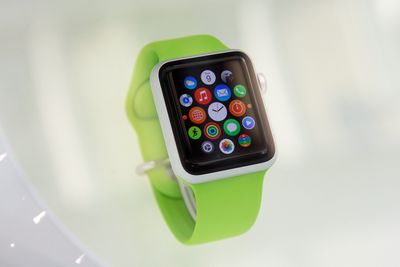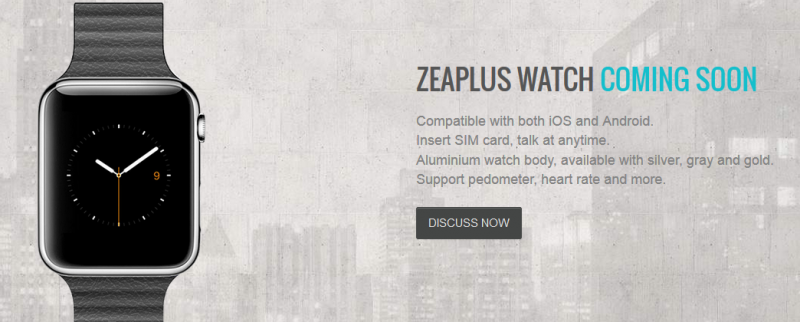Warning: this story contains graphic images
Seven miles northwest of San Marcos, Texas, 50 or so naked human bodies in varying stages of decomposition are strewn about in a 16-acre field.
Some are fully mummified, their flesh dried out by the harsh Texas sun. Others have been picked over so voraciously by vultures that their bones are frayed. The most lurid are the fresh ones: week-old bodies that have ballooned to twice their normal size and crawl with thousands of maggots.
This operation, at a place called Freeman Ranch, is part of the Forensic Anthropology Center at Texas State University. Colloquially, facilities like these — this is the largest of six worldwide, all in the US — are simply called body farms.
The bodies are donated and left out in the elements as part of research aimed at better understanding the process of decomposition, mainly to assist in criminal investigations. When an unidentified body turns up, the first question police typically ask is how long ago the person died — and the observations made at body farms have been crucial in allowing them to answer it. Researchers at Freeman Ranch are also using their knowledge of decay to help identify the bodies of hundreds of people who die of dehydration or heat stroke every year after they cross the border into Texas.
"What we really want to figure out is, at a basic level, how decomposition works," says Daniel Wescott, an anthropology professor at Texas State and the director of the body farm. "There's a whole little ecosystem going on right here." He gestures towards one body, with a leathery face that's stiffened into an opened-mouth yowl. "And we want to understand every part of it."
The vast majority of humans who have ever lived share the same fate after death: decomposition. Unless your body is frozen, cremated, or otherwise destroyed after you die, it will inevitably be consumed by bacteria, insects, and animals that recycle your organic substances into new forms of life. Even today, the protection of embalming fluid and wooden caskets doesn't stop the process — it only delays it slightly. Given how universal decomposition is, it's a bit surprising that until quite recently, our knowledge of it was fairly thin.
The first known study of human decomposition is Washing Away of Wrongs by a Chinese judge named Song Ci. It's a 13th-century treatise on basic autopsy principles: how to examine the body and determine the cause of death, for instance. This work was eventually followed by a series of European scientists who exhumed bodies in the 1800s and first observed the specific stages of decomposition that a body experiences as it decays.
These studies made broad generalizations on decomposition based on just a few bodies. Through the 1970s, forensic scientists still largely relied on research involving pig carcasses when consulting on criminal cases and attempting to determine the all-important post-mortem interval — the time between when a person dies and when his or her body is found. No one had ever watched a human body decay in a controlled setting firsthand.
That changed in 1980 at the University of Tennessee, where the anthropologist William Bass founded the first body farm. Bass got the idea after being called on to help police in a local murder case: they'd found a disturbed Civil War-era grave and suspected that the body in it was a recent one, swapped in by the suspect to conceal the evidence. Bass analyzed the body's clothing and other factors and found that wasn't the case. But he was troubled by our incomplete knowledge of human decomposition.
So he started collecting bodies. The very first one — a 73-year-old man who'd died of heart disease — was left to decay at an abandoned farm that had been donated to the university, just outside the town of Knoxville. Eventually, Bass and his students fenced in a 1.3-acre patch of woods on the property and began studying multiple bodies at once. Over the years, researchers at the Tennessee body farm (a group that would include both Wescott and Kate Spradley, another current professor at the Texas body farm) processed more than 650 bodies, legitimized the study of human decomposition, and established much of what we now know about it.
/cdn0.vox-cdn.com/uploads/chorus_asset/file/2397326/NearIRCrop.0.JPG)
An aerial view of Freeman Ranch, showing bodies in cages. (Daniel Wescott)
But there's still a lot we don't know. "Heat and humidity really affect the rate of decomposition. That means that the process varies from region to region," says Wescott, a cheerful, gray-bearded forensic anthropology lifer who has textbooks, diplomas, and a human skull on his office bookshelf. A body decays at a much different rate in the Texas Hill Country than in Eastern Tennessee. This is why body farms were subsequently founded in North Carolina, Illinois, and here at Texas State. Because this sort of operation would be illegal under European law — and hasn't yet been attempted elsewhere — our current knowledge about human decomposition is entirely dependent upon what goes on at these facilities.
Four full-time staff, along with dozens of graduate and undergraduate volunteers, now run the Texas State body farm, which is paid for with Texas State University funding and fees from various law enforcement agencies. The staff maintains an ever-growing collection of 200 or so human skeletons — the cleaned and catalogued results of a year or so of decomposition outside. These contemporary specimens are valuable, Wescott says, because the proportions of human bodies in general are always changing — nowadays, largely due to increasing rates of obesity, which alters the rate of joint wear — and most collections elsewhere are historical. Having a substantial collection of recent skeletons on hand helps in determining the age of an unidentified person who is found in mysterious circumstances.
At his previous job at the University of Missouri, for instance, Wescott was called on to help when a decapitated body was found near the town of Columbia in 2008. "The first thing I noticed were the thigh bones," Wescott says. "They were much thinner than normal, and joined the body at an unusual angle." Comparing them to specimens in the University of Tennessee's collection, he realized that they were the result of an extended period of time spent sitting — most likely, in a wheelchair. Police told the public that the remains were probably of a wheelchair-bound woman. The case was cracked open when a wheelchair salesman heard this and called in, saying he had one customer who'd uncharacteristically missed a recent fitting and had stopped returning his calls.
/cdn0.vox-cdn.com/uploads/chorus_asset/file/2400318/sidebar-image__1_.0.jpg)
Why do people donate their remains to the body farm?
The number of people donating their bodies to the Texas State body farm and others continues to grow — and many of the researchers themselves, including Daniel Wescott, have signed up to donate their bodies after they die. This Oxford American profile of donors explains some of the reasons why.
1) Many people want to make a positive contribution to science with their bodies after they die, and the body farm's requirements are much less restrictive than those of most medical schools or hospitals. The body farm accepts obese bodies, as well as those that have been autopsied or had organs removed to be donated. The only restrictions are that bodies must be under 500 pounds and can't have an infectious disease.
2) Other donors might disapprove of the ceremonial trappings and artificial processes that are part of the modern funeral. As part of the growing natural burial movement, thousands of people in the US are opting out of embalming, concrete burial vaults, and steel caskets, all of which slow down decomposition and put inert materials into the ground. Donating to the body farm accomplishes the same thing - allowing a body's nutrients to be quickly recycled into other organisms after death.
3) Finally, there's the cost: the price of the average US funeral has surpassed $7,000, and even cremation typically costs a few thousand dollars. The Texas State body farm offers free pickup of any bodies within 200 miles, as well as free pickup from the Austin airport nearby.
Looking at decomposing human bodies for the first time is difficult. Nowadays, most of us rarely see any sort of human remains at all. About 70 percent of Americans now die at hospitals or other facilities, rather than at home, and the bodies that do go through a formal viewing are preserved with embalming fluid and covered with makeup, then sealed in caskets to decompose deep underground. There's been a curtain hung between life and death, and most of us seldom have the chance to peer behind it.
Moreover, says Antonius Robben — an anthropology professor who studies beliefs and practices involving death — "there is no culture on Earth that leaves a body without any ritual. It is one of the few universals. We have a very strong notion of the integrity of the body, and a great preoccupation with what happens to it, even though we know the person inside is gone."
One of the reasons it is so difficult to see the bodies at Freeman Ranch — lying in the dirt, getting picked apart by insects and animals, oozing decomposition fluid onto the ground — is that it explodes this preoccupation. A decomposing body looks like it's from a different species than a preserved one at a wake. And the ugly truth is that, eventually, nearly every single one of us will go through the process of decay.
Freeman Ranch itself, however, is a beautiful place: 3,500 acres of Hill Country terrain, dotted with sagebrush and cacti. Apart from the body farm, it's home to an actual farm — a working ranch, operated by the university, that serves as a classroom for courses on animal husbandry. The property is also used for ROTC drills, astronomy classes' stargazing sessions, and ecological research.
And, five or six times per month, a newly deceased human body arrives. At a Texas hospital, funeral home, or medical examiners' office, it's strapped to a gurney, loaded into a cargo van, and brought to the ranch, where researchers and student volunteers spring into action.
First, they unload the body and carry it into the onsite lab, where they take measurements, photographs, hair, and blood samples. An ID number is assigned, replacing the person's name and staying with the body permanently. Whenever possible, they place the body outside for decomposition immediately, but when enough staff aren't on hand (it takes a few to place the body outside), it's kept in a stainless steel walk-in refrigerator for a day or two to arrest decay. Placement involves a short ride in a pickup truck to a fenced, lightly wooded lot. The area is monitored 24 hours a day by security cameras, though Wescott says no one has ever tried to break inside.
There are 50 or so bodies there at any given time, placed irregularly, at least five feet apart. Based on the research going on, they decay in slightly different circumstances. Some are intentionally left in the hot sun, among foot-high prairie grasses, while others are put in a shady grove of Ashe juniper and oak trees. Most are protected by two-foot-high metal cages, but some are fully exposed, so researchers can observe the effects of vultures using tree-mounted game cameras. Currently, the bodies are all naked, but in the past the researchers have studied the impact of clothing on decomposition as well. A weather station continuously logs temperature, solar radiation, precipitation, and other metrics, to be considered alongside data on the bodies in creating models of decomposition. The smell is distinctive — a mix of wet rot and rancid meat — but less pungent than you might expect, and much more diffuse than in the lab, where the bodies are cleaned after their time in the field.
When Wescott brings new people to the body farm, he typically starts with the oldest, most decayed bodies, to give the visitors some time, as he says, to "get used to it." That's because the first, freshest stages of decay are the most overwhelming. Still, to understand the process of decomposition, you really have to see the stages in order, from the grisly beginning to the spare, dried-out end.
The first stage begins shortly after death. Once the heart stops beating, the body's cells can no longer maintain homeostasis (a stable equilibrium of temperature, pH, and other factors), so they rupture. "When that happens, you start getting skin slippage" — Wescott mimes the skin falling off his own arm — "and you have putrefaction. This is when the bacteria start feeding on you. All of a sudden, there's this really rich carbon source for them."
Within a few days, this frenzy of feeding leads to the second stage: bloat. As bacteria digest the solid components of the body, they release gases — hydrogen sulfide, carbon dioxide, and methane — which cause the body to swell enormously. When a body at Freeman Ranch is in "full bloat," as the researchers say, it can expand to twice its previous size, in some cases even pushing the metal cage off the ground. During this stage, bacterial production of sulfur also gives the body a strange, yellowish color, part of a process called "marbling."
/cdn0.vox-cdn.com/uploads/chorus_asset/file/2397848/bodyfarm-process.0.jpg)
click to view
The stages of decomposition: bloat (top), advanced decay (middle), and dry decay (bottom). (Joseph Stromberg)
Bloating also triggers the arrival of flies, which lay eggs in any exposed orifice, including the eyes, ears, nose, and mouth — and for bodies that have been autopsied, the long incision that runs the length of the chest. A couple of days later, these eggs hatch into maggots, which cover the skin in a thick, crawling swarm. Because so many maggots hatch on the face, they consume the flesh there fastest, which creates a strange juxtaposition: a shriveled, blackened skull with carved-open features attached to a still-swollen body. The remains in this stage are the most jarring on the farm — distended, vividly-colored bodies, still fleshy enough to roughly resemble living humans but covered in a carpet of maggots. Get too close and flies will start landing on you, too.
After three days of decomposition, the body moves to the third stage: purge. At this point, it begins to shrink, as skin bursts open to relieve mounting pressure and fluids leak out. "The purge is so rich in nitrogen that it actually kills off all the vegetation around it," Wescott says, pointing to the blackened dead grass surrounding one body. "But if you come back in year, it'll be really high in plant life, because it'll act as a fertilizer."
Within a few weeks, the bacteria and maggots have consumed most of the body's flesh. Next comes the longest stage, which encompasses most of the bodies at Freeman Ranch: advanced decay. Those that are left in the sun dry out and mummify, because the heat makes them inhospitable even for flies and bacteria — one major difference from the Tennessee body farm. Those in the shade continue to be slowly consumed until all flesh is gone. By this stage, the bodies only look like humans in an abstract, indirect way. Walk by one quickly, and you'd think it was a high-quality halloween decoration.
Finally, within six months to a year (depending on weather conditions) comes the final, dry stage, when the body is reduced to just a pile of cartilage, bones, and loose-hanging scraps of skin that could be mistaken for dirty clothing. After a certain point, when decomposition is more or less finished, the bones are taken inside to the lab, boiled in industrial kitchen kettles to remove the remaining traces of flesh, scrubbed clean by undergrad interns working with toothbrushes, and added to the collection.
All this is drastically different when the bodies are left uncaged. "You can see frayed bones, and feathers," Wescott says, pointing to one exposed body. "That's evidence that vultures have been here." The game cameras show that they often arrive within minutes of the body being dropped off, and that hordes of them — sometimes as many as 40 at once — can surround a body, picking it clean within a few hours. They won't eat the skin, but rip holes in it to get at the innards. At times, they'll perch on top of the rib cage and "display" — violently flapping their wings up and down in a show of dominance — which can crack the ribs. Other times, they'll drag the skull and other pieces of the body in different directions, which is why a visitor observing a vulture-ravaged body needs to look out for bones underfoot.
/cdn0.vox-cdn.com/uploads/chorus_asset/file/2399902/buzzardpicked.0.jpg)
click to view
A skeleton that's been picked over by vultures. (Joseph Stromberg)
For Wescott and the other researchers, caged decomposition presents the most interesting scientific experiment at the body farm. It was once thought that the bacteria that drive decay are simply the same species inside you while you're alive, but it's since been discovered that a succession of different species carries it out over time. Some of them are indeed present during life, but others are brought to the body by flies and beetles. Meanwhile, some bacteria species release chemicals that actually attract particular kinds of insects — and proteins in those insects' saliva kill off competing bacteria. Further, these insects are prey for mice, which in turn attract rattlesnakes and other larger predators. A decomposing human body, it turns out, creates a remarkably complex, tightly evolved, and underappreciated ecosystem. Scientists are now calling it the necrobiome.
What Wescott really wants to do is comprehensively map the necrobiome to aid in determining the post-mortem interval. Figuring out how long a recent body has been dead is fairly easy, but for those that have been lying around for months, narrowing it down becomes increasingly difficult. The necrobiome could be a solution.
"You have this body that dies, and it's being recycled. That recycling process involves lots of scavengers, from bacteria to fungi to insects to birds," he says. "Instead of approaching it as ‘How do we figure out the time since death?', we want to approach it as ‘How do we understand the necrobiome, and the actual process of how bodies decompose?'" Someday, he envisions, forensic investigators might swab a newly discovered body, sequence the bacterial DNA on it, and use the concentration of various species to tell exactly how long it's been in decay.
/cdn0.vox-cdn.com/uploads/chorus_asset/file/2399904/cages.0.jpg)
click to view
Daniel Wescott, standing next to caged bodies. (Joseph Stromberg)
That sort of precision analysis is still a little ways off, but research done at the body farm has already produced increasingly sophisticated forensic techniques. In workshops, staff teach police about methods of search-and-recovery and calculating the post-mortem interval. One of these methods is analyzing the gases emitted by the body, since the concentration of different gases changes predictably over time. The researchers also help train cadaver dogs, and put on exercises simply intended to give newly minted police cadets their first look at a dead human body. Recently, they've been testing the idea of mounting near-infrared cameras on aerial drones to rapidly search for anomalies in soil chemistry over a large search area, which could allow police to find a buried body much more quickly than is currently possible.
Wescott and other body farm researchers also frequently consult with police on especially difficult cases. Recently, Jorge Molina, an officer with the Texas Rangers — a statewide law enforcement and investigation agency — came to Wescott for help in analyzing a body found in Nueces county, near San Antonio. "The remains were in such bad condition that a facial reconstruction was extremely difficult," Molina says. "The skull had been fragmented into several pieces." Using data collected at the body farm and from the skeleton collection, the two reconstructed the skull to determine the likely age and ancestry. Molina now believes that he and other investigators have matched it to a missing person, and await the results of a DNA test for confirmation.
Of all the applied work going on, the most important may be a year-old project run by professor Kate Spradley, called Operation ID.
Over the past few years, increasing numbers of migrants who cross the border from Mexico have been found dead in unexpected places — like Brooks County, Texas, which is 70 miles from the border, but was the site of more than 100 migrant deaths last year. "It is a mass disaster, but nobody wants to acknowledge that," says Spradley, an anthropologist who came to Texas State in 2009 after working on identifying migrant remains in Pima County, Arizona. "You have multiple people dying every day."
The reason is a combination of border policy, geography, and heat. After migrants are smuggled across the Texas border by paid "coyotes," they're typically driven in trucks up route 281 to Falfurrias, Texas. But at a border station just south of town — one of 71 interior checkpoints along the US-Mexico border — all vehicles are thoroughly checked, so the coyotes drop them off a few miles from the checkpoint and instruct them to walk the 45 miles or so around it. Even for the people who prepare adequately, this sort of multi-day hike in the Texas heat is grueling, and many can't make it. "It's usually exposure, or dehydration," Spradley says. "Then the coyote will force the group to leave that person behind, or they'll choose to do so."
Police and border officers find these victims hours or days after they die — most often in the shade of trees, boulders, and small caves — either during regular patrols, or after receiving a tip from a local resident. But because these counties aren't actually on the border, they receive no federal funding to deal with these bodies. As a result, the corpses are usually buried in unmarked graves, without an autopsy or any attempt to identify the remains and contact the family.
Few Americans outside these counties know about the problem, or the fact that the bodies are disposed of in this way. In fact, it took Spradley five years to figure out what actually happens to these migrants' bodies. But over the last year or so, she's worked with anthropologists from Baylor University, the Argentine Forensic Anthropology Team (a nonprofit originally founded to reunite families with the bodies of dissidents killed in Argentina's Dirty War) and the Colibri Center for Human Rights (an Arizona-based group) to exhume these graves and return the bodies to their families. They began with just a few bodies, but last year, 60 were dropped off at once at the Freeman Ranch lab. There are now 85 remains on hand — some already processed down to bones and boxed, others waiting, zipped into white polyethylene body bags — that need to be identified. Recently, some law enforcement have begun bringing bodies directly there for analysis.
Spradley and her research team begin by constructing a biological profile of each body, attempting to determine its age and sex, the postmortem interval, and other factors. They put together a cultural profile as well, looking at the clothing, jewelery, and other items buried with the body to learn as much as possible about its origin. Apart from processing the bodies, they also painstakingly clean the personal belongings — washing sneakers and shredded T-shirts of decomposition fluid — so they can take photos and post them to the online database NamUs, where relatives might be looking for information and often remember what the deceased was wearing when last seen alive. Going through these possessions can be heartbreaking. "When you look at the personal effects — the toothbrushes, the toothpaste, one person had an asthma inhaler — you can see their preparation, and you can't help but identify with them," Spradley says.
In some cases, the staff also carries out a DNA analysis, but its usefulness is often limited because CODIS — the FBI's DNA database that's often used to match the DNA from missing persons with families — specifically prohibits DNA samples from people outside the US, for political reasons.
Still, the Texas State team has made at least two positive matches so far. One was an El Salvadoran man named "Oscar" (Spradley requested that we not print his real name out of respect for the family's privacy) who died in Brooks County in 2012. His family knew this because a man who'd been traveling with him later contacted the Colibri Center and reported the circumstances of the death, leading to a missing persons report being filed. The associated body could, however, no longer be located. Police said they had no record of where exactly they'd buried the body.
/cdn0.vox-cdn.com/uploads/chorus_asset/file/2399906/shoes.0.jpg)
A pair of shoes that belonged to a deceased migrant, cataloged at Freeman Ranch. (Joseph Stromberg)
More than a year later, as staff processed several exhumed bodies from Brooks County, Spradley made a connection. "I was reading the missing persons report, and it said the travel companion had tied a brown plaid shirt around his knee," she says. "And I remembered that one of our students had just washed a brown plaid shirt that day." Looking further into the case, she saw that everything fit together: the body in their lab matched the report. After contacting the family and conducting DNA tests, she was able to return the remains last month.
"I think the worst thing that anyone can face is not knowing what happened to their loved one. They ask themselves, ‘Did they just decide to never come back? Did they die?'" Spradley says. "It's never good news to hear that a family member has been identified, but I think it allows them to at least begin the grieving process, and take in what happened. They get the remains back, and they can have a ceremony, and a place to go to mourn. I think that has to be meaningful."
To accomplish all this — to return the migrants' bodies to their loved ones, and help solve murders — Spradley, Wescott, and the rest of the researchers at the body farm are forced to do something few of us would volunteer for. They work intimately with dead human bodies on a daily basis.
Dealing with this, Wescott says, gets easier over time. "It's like anything else — the best way to get used to doing something is by doing it," he says. "The more you work around people who are dead, the less it bothers you."
Still, there's a danger to becoming too habituated to these bodies and forgetting what they represent. Ultimately, they're a teaching tool, but they're more than just a specimen. "You've got a job to do, but you've also got to remember that this body was once a living person," Wescott says. "You've got to remember that there are family members and friends who love this person, and the body deserves your respect."
Correction: This previously stated that anthropologist William Bass was deceased.



/cdn0.vox-cdn.com/uploads/chorus_asset/file/2397326/NearIRCrop.0.JPG)
/cdn0.vox-cdn.com/uploads/chorus_asset/file/2400318/sidebar-image__1_.0.jpg)
/cdn0.vox-cdn.com/uploads/chorus_asset/file/2397848/bodyfarm-process.0.jpg)
/cdn0.vox-cdn.com/uploads/chorus_asset/file/2399902/buzzardpicked.0.jpg)
/cdn0.vox-cdn.com/uploads/chorus_asset/file/2399904/cages.0.jpg)
/cdn0.vox-cdn.com/uploads/chorus_asset/file/2399906/shoes.0.jpg)










 With well over 150 million active users a month uTorrent is by far the most used BitTorrent client around.
With well over 150 million active users a month uTorrent is by far the most used BitTorrent client around.








